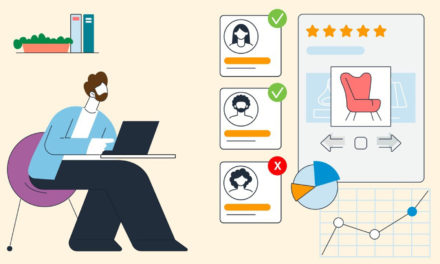In this exclusive thought leadership article, the author shares his perspective on how businesses are transforming with the power of graph technology.
The personalisation of goods, services and the user experience has become an essential element of customer satisfaction—in today’s world, any business that does not harness the power of data analytics to deliver an insights-based customised experience will be left behind.
An Epsilon survey in 2018 found that 80% of consumers want personalisation from retailers. From awareness to advocacy, this is a common thread that extends to every stage of the customer journey. Now, competition amongst businesses is not just a war on who can collect the most data, but rather who possesses the right tools and understands the functionalities of data analysis. It is the extraction of useful links and insights from a sea of disaggregated data that formulates the ultimate hyper-personalised experience.
Businesses have long relied on legacy relational databases and a traditional understanding of data analysis to derive consumer insights in a two-dimensional fashion, with the usual arrays of tables and indices. However, building a 360 view of a customer to deliver personalised services requires a fundamental change in the way data is perceived and analysed.
The Rise of Privacy
Even as consumers demand greater personalisation, it has surfaced an increased wariness about how their data is being collected and used. A 2021 Twilio report found that 7 out of 10 consumers want personalisation but are only comfortable with it as long as brands are using their own data, also known as first-party data, and not purchased data, or third-party data. Tried and tested methods of delivering personalisation through third-party data will soon become a thing of the past, as consumer consent drives us into a cookie-less world.
This has borne the term zero-party data, which refers to customer data which is intentionally and proactively shared with a brand. This can include preference center data, purchase intentions, personal context, and how the individual wants the brand to recognise them.
Opting in on zero-party data provides a definitive and trustworthy point of reference as it comes straight from the source. However, opting out of personal data collection and processing fragments both quantity and quality of data a company is able to work with. Furthermore, as data privacy regulations around the world increase—each requiring adherence to varying sets of legislation—companies face an additional layer of complexity in having to track data life cycles across multiple countries and the obligations it needs to abide by, before any meaningful analysis can even begin.
Building a Data Collection Strategy that Works
Businesses are now pressured to maximise insights obtainable from first-party data collection through web or platform analytics. When a business scales to offer more products and services, they may possess numerous sources of big data, which then requires the aggregation of user behaviour information across multiple platforms or devices.
Via a relational database, this process is long-drawn and complex, as it struggles to build an all-rounded profile of the customer, their behaviours and preferences based on these disparate datasets. Performance of relational databases slows significantly especially as data scales to terabyte and petabyte-level, or transverses across 5 or more hops.
Furthermore, as businesses evolve to include zero-party data collection as a key ingredient to their data strategies, companies are able to directly survey the consumer on what level of personalisation they prefer. However simple the concept, successfully building the right strategy to seek consumer content for data requires a good foundational understanding of the first-party behavioural data an enterprise has. Unless supported by a basic level of identification and understanding of the customer’s site-wide, app-wide and on-page behaviours, businesses are limited by the simple fact that they don’t yet know what they don’t know.
Large enterprises in particular face mounting hurdles. The strategy to zero-party data collection may be relatively straightforward for smaller businesses with limited offerings, but for large corporations with an extensive set of business units, it is difficult to expect their consumers to willingly fill out lengthy surveys over various platforms and devices without reaching repetition fatigue. Questions must be carefully and strategically chosen based on an existing observation and profile of each customer.
If the goal in offering personalised services is to establish common links across datasets and build a 360 view of every relevant piece of information that links back to the customer, their preferences and behaviours, we need to look beyond relational databases to achieve a streamlined and efficient data management strategy.
What is an Identity Graph and How can it Connect Data?
At its most basic form, an identity graph contains a series of data points, or identifiers, represented by nodes. The relationships between them are represented by links connecting each node. In this manner, an identity graph can stitch together different types of datapoints or identifiers from various datasets, consolidating them and creating a bigger unified picture of the customer, the household they belong to, and the devices they use. The identity graph connects all related preferences and behaviours from disparate sources to build a 360 profile of each consumer.
AT&T’s WarnerMedia uses an identity graph database across 15 Warner Media channels, operated by its advertising and analytics division Xandr. Data from Cinemax, CNN, HBO and TNT, contributes data from millions of customers each to the distributed graph database, unifying the profile of each customer across the variety of service offerings WarnerMedia provides.
Powered by the only scalable graph database and analytics platform for the enterprise, TigerGraph, Xandr’s identity graph is the first and largest within the advertising industry, scaling horizontally to accommodate over five billion vertices, including users, devices and identifiers, and seven billion edges, for a nuanced, complex and all-encompassing representation of the relationships between them.
Identifying appropriate questions for zero-party data can also be managed within an identity graph by assessing first-party data and existing third-party data. This protects personal privacy concerns while streamlining the process—as TigerGraph’s technology enables algorithm programming within the platform to sort and manage raw data, data imports are parallel processed in real-time for hyperconnection and analysis to produce deeper consumer insights that make business sense.
Delivering a Hyper-personalised User Experience
The ability to connect an individual with the various products and services they use, across a multitude of personal and home devices utilised on an everyday basis, enables a business to provide customisation across devices and products like never seen before.
Xandr used these insights to solve one of the biggest issues in advertising – ad fatigue. Using an identity graph powered by TigerGraph’s technology, Xandr took cues from behavioural signals displayed by a single user or household across their various devices, and across WarnerMedia’s various offerings to determine the maximum frequency of ad placement before a customer would experience fatigue.
Xandr is able to track the number of times an ad has been displayed to a user across all their devices or within their household and place a cap on how many times they are shown a particular advertisement. An industry gamechanger, Xandr goes beyond attracting advertisers with higher quantity and quality of user data, it offers a far more targeted approach and a promise to optimise ad spend.
New Approach to Zero-Party Data Collection
Identity graphs can improve businesses’ adoption of zero-party data collection, building a fundamental understanding of each customer and helping businesses strategise the information they should seek direct consent to. This helps prevent customer lethargy from potentially having to answer too many questions, which makes the process of personalisation inefficient and cumbersome. Furthermore, direct questions to the consumer are not always able to pick up on behavioural signals the same way graph technology can, to connect disparate first-party data into discernible trends of behaviour displayed by the customer.
In Conclusion
Graph analytics is a critical tool transforming the way businesses interact with their data—connecting fragmented datasets from different pipelines to uncover powerful, new perspectives for wider, operational analytics at scale. Enabling businesses to build a comprehensive unified portrait of each customer through a graph-based identity resolution, graph technology extracts maximum value from data by breaking down silos. This ultimately empowers businesses to further develop their zero-party data collection strategies to round out the perfectly tailored customer experience.


















